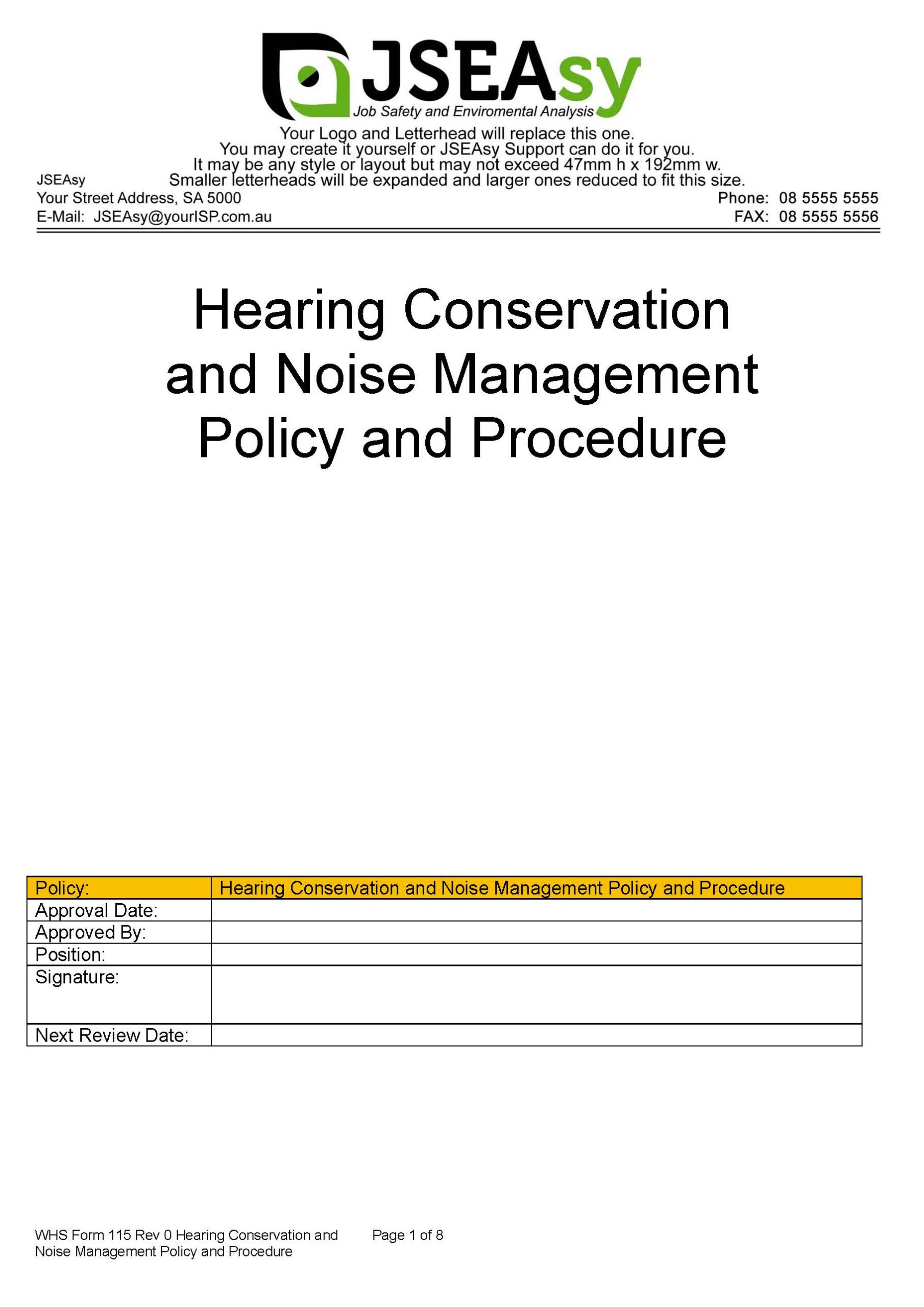WHS Form 115 Hearing Conservation and Noise Management Policy and Procedure
Occupational noise-induced hearing loss (NIHL) is a major compensable industrial disease in Australia and entails substantial economic costs. Exposure to excessive noise also entails largely unrecognised costs to organisations by way of increased employee turnover and absenteeism, lowered performance, and possible contribution to accidents. As well as the economic cost for employers, NIHL imposes a severe burden on health and social services and the economy as a whole.
The purpose of the policy is to prevent noise-induced hearing loss and other detrimental effects of exposure to excessive noise in the work environment.
To protect employees who are exposed to high noise levels and ensure, so far as is reasonably practicable, that the potential for exposure to noise that can contribute to hearing loss is eliminated or risk mitigated.
To:
- Minimise occupational noise-induced hearing loss and tinnitus by an approach that emphasises the reduction of noise levels at work by engineering noise control measures.
- Promote the recognition and understanding of the effects of exposure to noise.
- Promote the adoption of a systematic approach to reducing and managing exposure to excessive noise.
- promote implementation through consultation between employers, employees and/or employee representatives.
Contents
Introduction
Purpose
Outcome
Scope
Hearing Conservation
What is occupational noise exposure?
Policy
Legal Requirements
Definitions
Hazardous noise
Nuisance noise
Decibel (dB)
Sound level meter (SLM)
Time-weighted average (TWA)
Audiometric test (or testing)
Worker
Managing risks of noise
Identification
Risk Assessments
Roles and Responsibilities
Management
Managers/Supervisors are responsible for:
Workers are responsible for:
Hearing Protection
Signage
Audiograms/Hearing Tests
Annual Testing
Standard Threshold Shift (STS)
Training Program
Training and education will be provided:
Record Keeping



